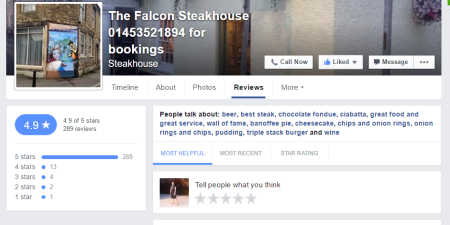
We’ve all been there. You provide a great service or product for a customer, they’re really happy with everything and promise to give you some feedback or leave a review. The days pass by, they turn into weeks. That review is never coming. At this rate it feels like you’ll never get more reviews. Where did you go wrong?
To get more reviews you’ll have to try something new!
The answer is that you didn’t do anything wrong. Even taking every action to make the process of leaving reviews as obvious and easy as possible doesn’t guarantee even 5% of your customers will leave you feedback. It’s a whole host of factors, from things like the Bystander Effect to being busy to being plain lazy. I know I’m guilty of using a lot of services and buying a lot of products without ever leaving reviews, even though I’ve relied on other people’s reviews to make my decision!

The best intentions of even your most loyal customers will fall by the wayside when faced with a wailing child or angry spouse! There are a million things conspiring against any single review being left, if it’s not directly after a purchase there’s a good chance it just won’t happen.
With this in mind it’s astounding how many people still feel it’s rude to ask for a review. Maybe it’s something British? You absolutely should ask your satisfied customers for a review. Of course you have to go about it the right way, but that’s true of almost anything in business!
If you’re uncomfortable asking your customer to leave you a review just ask yourself how you’d feel in their position. If a business has provided you a great product or service and an email pops up a week later asking for 2 minutes of your time to leave feedback would you be offended? So long as you go about asking for the feedback in the right way the worst that you can reasonably expect to happen is to be ignored.
How can I reach out to my customers for feedback?
Social Media
This certainly feels like the least intrusive way to ask. Unfortunately it also doesn’t produce reliable results. The way you go about asking for reviews will differ between the various Social Networks.
Facebook comes with an inbuilt ‘Reviews’ tab that you can utilise along with re-purposing positive feedback left on other parts of your page. Depending on the size and personality of your business you may just want to post the occasional message inviting happy customers to leave some feedback. If you’re a smaller business or one that has a lot of contact with customers you might consider messaging them directly, though be sure this is appropriate before you do it.
It goes without saying that you should reply to comments left on your page and invite those customers to leave feedback if they’ve had a positive experience. Only a portion of Facebook users know about the ‘Reviews’ tab and so many will simply leave their feedback on the first part of your Page they can comment on.
On LinkedIn you have to approach things quite differently. The first difference is that you can’t leave a review for a Business, only individuals. What you should be going after here are ‘Recommendations’ not ‘Endorsements.’ Asking someone to write a personal recommendation requires a more personal touch. This can work to your advantage, if you have given the customer a good experience and you then ask for just a couple of sentences in your favour most people will be happy to oblige. Writing a review for ‘Brand X’ has no real impetus behind it unless you’ve had an extraordinarily good or bad experience. Writing a recommendation for ‘Steve the friendly Sales Rep at Brand X’ adds a human element and makes the whole process feel more natural.
Approach your customer or client at the right time, the afterglow of a deal signed or project completed is perfect. The amount of detail you ask for in the recommendation should correlate to how happy the customer is and how closely you’ve worked together.
Many people raise an eyebrow when I mention asking for certain details to be included in a recommendation. It’s human nature to find it difficult to articulate everything positive about a person without some direction. Without pointing someone in the direction of what you want them to comment on you risk ending up with hundreds of generic recommendations which are not nearly as effective. This is a balancing act, rather than saying directly that you want the recommendation to talk about your Product Knowledge, Enthusiasm and Dashing Good Looks simply introduce these ideas at the end of your message as something to help the customer get started.
Email has some real advantages over Social Media for gathering reviews. It also has one glaring disadvantage compared to all the other channels I’ll talk about. To put it simply, a lot of people are going to bin your email without ever opening it. But that’s true of a huge portion of all emails sent by businesses. If you have an automated process via an Email Client or Marketing Automation platform you can easily play the numbers game and garner more reviews with virtually zero effort after the initial set-up.
Well thought out email copy should speak to everyone and make them want to leave a review if they’ve gone as far to open the email. Think carefully about what your brand represents and why people buy from you. With that in mind crafting an email that makes your customer want to take the two minutes to help your business hopefully shouldn’t be too tricky!
Timing is as important as tone when asking for a customer to take an action via email. I mean this in two senses.
- In relation to the product/service you delivered. Sending a request for a review before a customer has had a chance to use your product is unlikely to be successful. Equally if it’s sent weeks after the fact you’re much less likely to get a response unless it’s a significant purchase.
- In relation to your customer. Remember that you are asking your customer to take an action. The best time of day to send such an email depends heavily on your demographics. If it’s people in full time work then there’s a good chance you wont make it onto their priority list even if they really did intend to leave a review.
The final advantage of email is that you can give your customer options or segment them according to your desire. Customers that are satisfied but only made a small purchase or who had little contact with you can be pushed toward Google Reviews where the Star Rating is as important as the words and no-one expects an essay. Star clients can be pushed to other platforms to leave more detailed reviews or even full testimonials.
Direct Mail
Don’t laugh! You’d be surprised how effective Direct Mail can still be, especially because it’s unexpected. The effectiveness of this channel does depend heavily on your brand and type of customer relationships.
An actual, physical ‘Thank You’ seems so strange in 2016 that it gives people pause for thought. Outside of Charities and Politicians few people will send post actually directed at you. We all get plenty that is addressed to us but how often do you get something actually written with you in mind?
Obviously it would be incredibly impractical to write a personalised letter to every customer. However, utilising the same thinking that you do for creating the email copy you can create a powerful piece of writing that should speak to your customer. I won’t pretend Direct Mail is a sensible strategy for everyone, it’s probably not the right choice for the majority of businesses. It can still be a powerful tool. Unless something is obviously Junk Mail we almost never throw it away before opening and reading it, you can’t say that about emails!
Phone
This is both the most intrusive and yet most effective method of obtaining feedback in a timely and targeted manner. There is no ignoring a phonecall, you will get a yes or a no if you reach your customer. Unless the customer says otherwise you should only call them once and you must always be as accommodating as you can. None of the other methods discussed here require an imposition on your customers time and so naturally this is the channel through which it is easiest to lose the goodwill you’ve earned.
I know none of this sounds positive yet. The aspects of calling a customer to gather feedback that make it trickier and riskier than other options are also a big part of what makes it so effective. There’s an inherent promise that once they’ve answered a few questions you’ll be out of their hair. You control the questions you ask and can adapt them to guide the customer to talk about certain things.
An email open rate of 5% is considered good for communications of this nature, click-through rate is lower again. Social Media interactions are unreliable and often difficult to focus. With a two minute call you can help your customer to articulate feedback they would have otherwise struggled to think of or phrase. It is then a simple matter for you to take what has been said, form it into a review and send it back to the customer for approval. Instead of having to think up and write their own review, follow links and submit it now they just have to approve of your summary of their own words.
This kind of approach to attaining feedback is not the easiest to master and it’s very easy to get over-involved when it’s your own business. Companies such as Customer Service Network offer various levels of data collection and compilation via telephone. ‘Review Gathering’ packages typically include;
- The call to the customer using a set of questions and instructions you’ve provided
- The transcription of the data gathered
- The reworking of this data into a suitable review format
- Providing a copy of this final review to the customer and seeking their approval
- Providing the customer a single-click ‘Post This Review to [X]’ option for relevant Social Media and Review platforms.
Hopefully this has helped address any parts of pursuing reviews that you may have found objectionable. When done in a responsible and respectful manner it’s perfectly acceptable. Happy customers will not find these unobtrusive requests objectionable in all but the most unusual of circumstances. Your customers do business with you for a reason and the vast majority of them will be perfectly happy to tell you what that is. To commit that reason to a webpage take a minute or two, sometimes even less.
Find your Brand’s voice, talk to your customers and let them know that a couple of positive sentences from them can have real impact on your business and help bring the service they obviously value to more people.
Related Post
Monitor, Influence and Lead...
Get Actively Involved in the Outcome of Search Results Don’t take negative publicity...
- April 28, 2011
- By Rob Thomas
- ORM
Free Online Reputation...
Listen to What’s Being Said About You Online (Free online reputation monitoring...
- May 5, 2011
- By Rob Thomas
- ORM
Online Reputation Management...
Creating a positive brand impression on the Internet You may have a fantastic product or...
- July 13, 2011
- By Rob Thomas
- ORM
Getting the Most from your...
LinkedIn is not only the most popular social network for professionals but with more than...
- November 22, 2012
- By Nadine Thomas
- Linked In
How One Business Saw Its...
Anyone who has ever been in business will know that things don’t always go according to...
- July 16, 2013
- By Rob Thomas
- Customer Reviews
Email marketing- the 5 key...
Email marketing should be every marketers most used, and favourite, tool. It’s a great...
- August 19, 2013
- By Rob Thomas
- Digital Marketing














[…] advantage with its enormous user base, not having to visit a separate site to rate a business will help to capture reviews from even the laziest of customers! Yelp and TripAdvisor are both dedicated reviewing platforms. Such platforms may attract a higher […]
[…] poor service; that’s just the way it is. So don’t leave the review process to chance – ask for customer feedback from both online and offline customer touch points. If you’ve done a good job, or provided a good […]